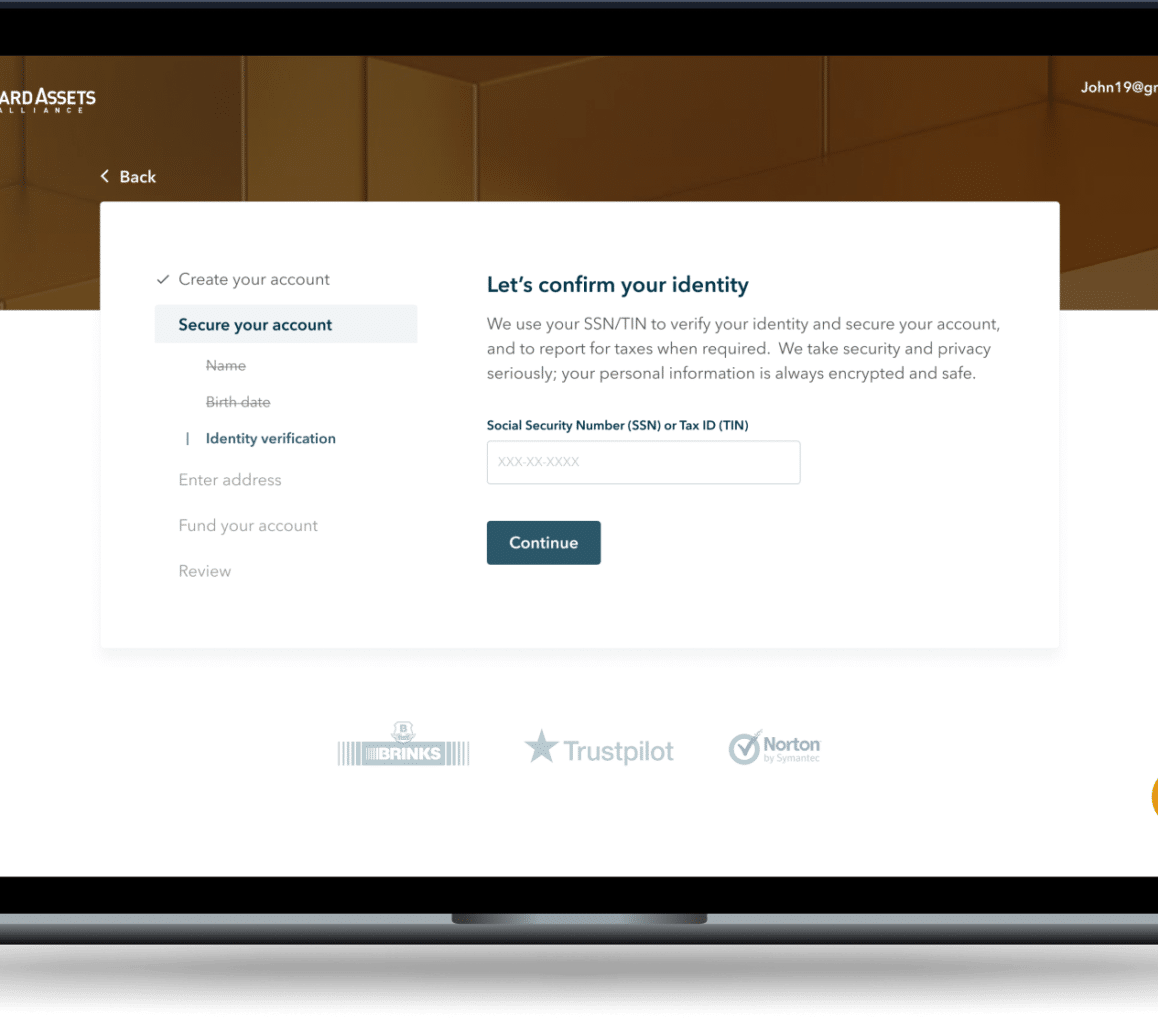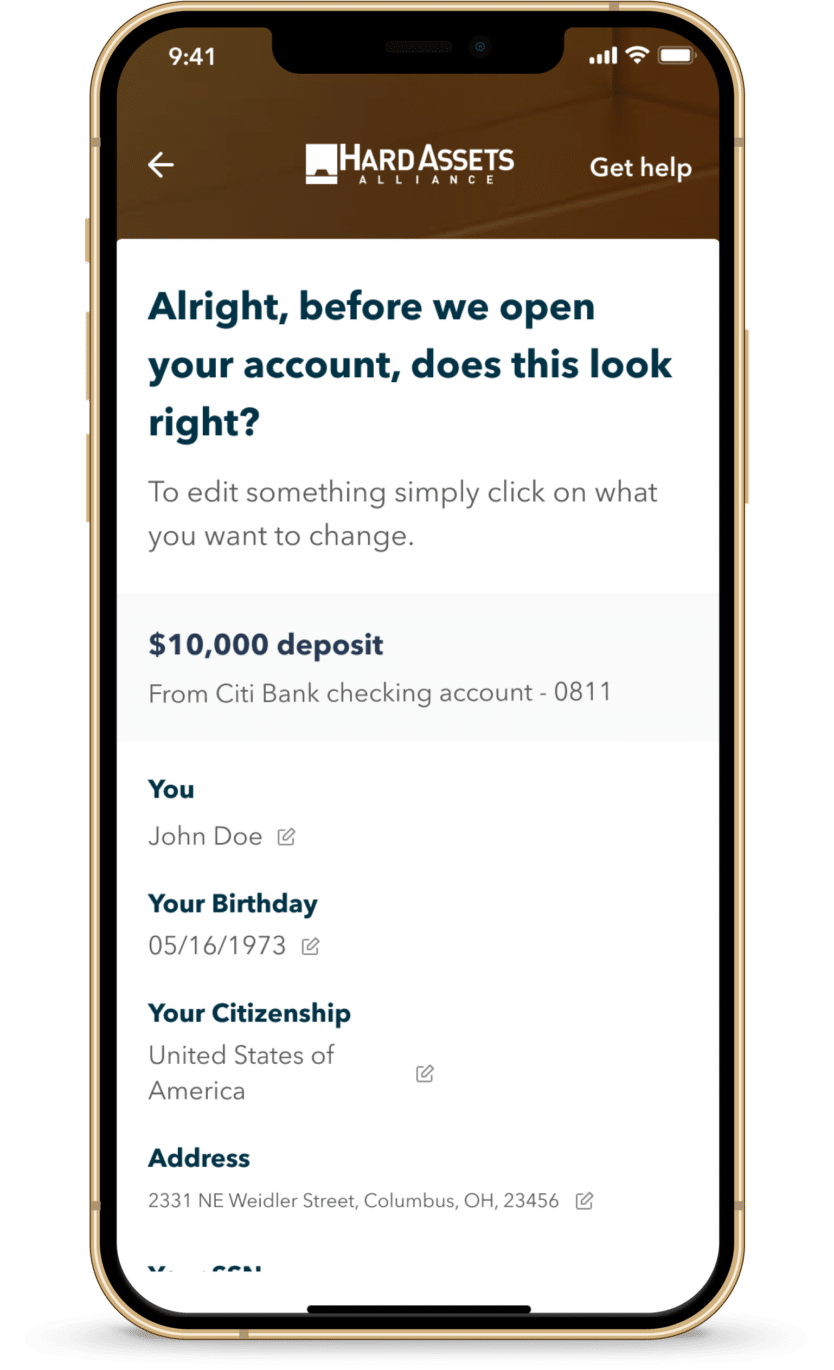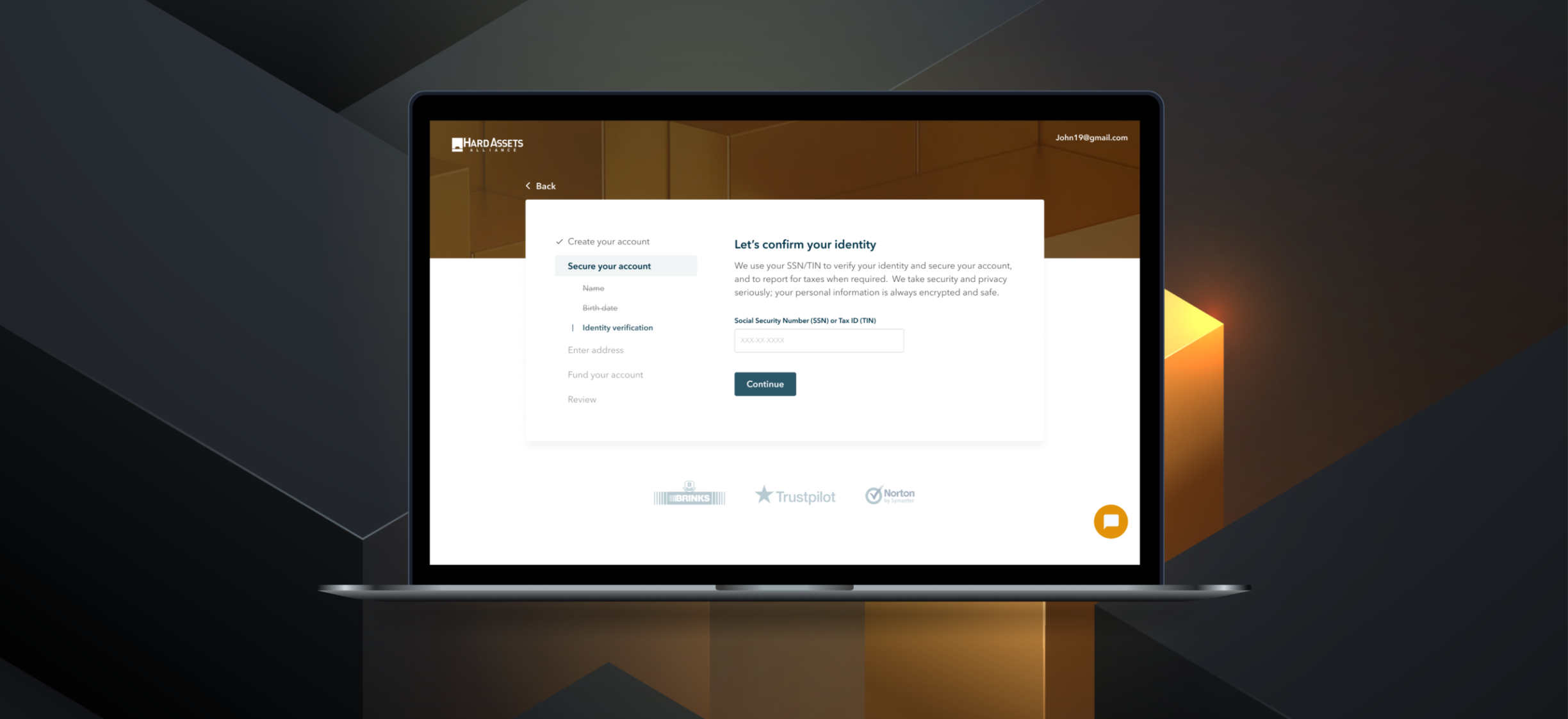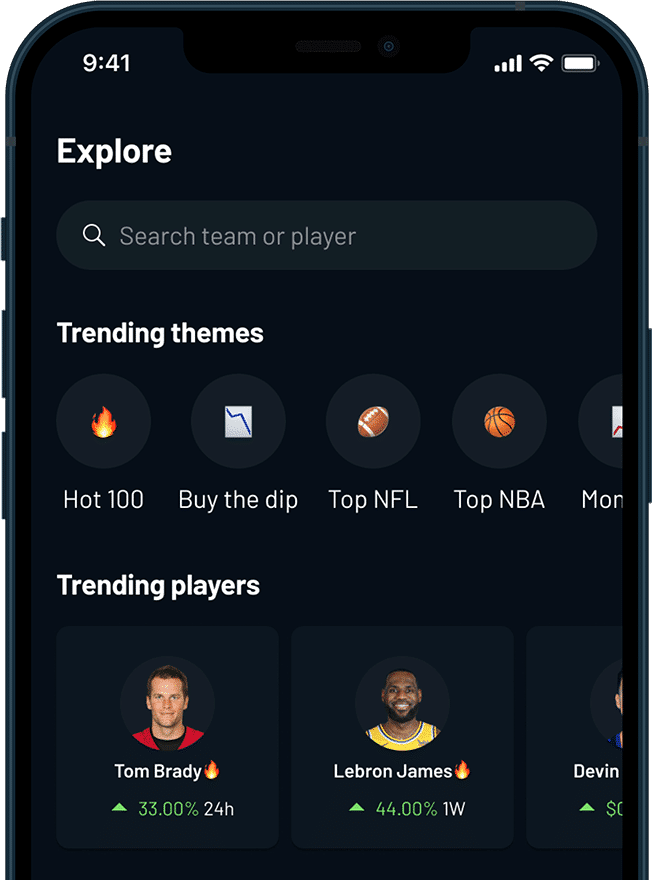Hard Assets Alliance
Hard Assets Alliance is a marketplace enabling investors to easily buy, receive, and store tangible precious metals.

- Client
- Hard Assets Alliance
- Product
- Web Application
- Industry
- Investment, Banking
- Vertical
- FinTech
- Headquarters
- New York, NY
- Company size
- 1-10
Key services
UX Research, User Flow Mapping, Information Architecture, UX Design, UI Design, Design System, Usability Testing, Web Design, Responsive Design

“Goji was very professional. I never came to a meeting doubting whether or not they would be prepared for it.”
Alex Daley
CMO, HAA


About Hard Assets Alliance
Hard Assets Alliance (HAA) is a product borne from the common problems people have when buying and storing quantities of real, physical precious metals. The main value proposition of HAA is that they let their customers buy tangible precious metals and ship them to your doorstep within an online marketplace.
Instead of sending you thousands to millions of dollars worth of precious metals to store at your house, they allow you to store the goods in a third-party vault for a very low cost.
And if/when you want your precious metals in your own hands, you can have them shipped to you—because you actually own them.
This service allows HAA’s customers to invest substantial chunks of change in precious metals without needing to either go through a third-party (where the values are only numbers on a screen) or take the risk of storing large amounts of investment commodities in their house.

Product Goals
- Boosting low website conversion [previously at 20%]
- Identifying problem points in workflow and funnel
- Re-building the onboarding experience
The Process
5 Semi-Structured, Moderated User Interviews: to establish user personas, pain points, and motivations with questions such as “What kind of things do you invest in?” and “What are some of the things you consider before making a large investment?”
10 Unmoderated Usability Tests: to see users go through the actual onboarding and identify issues, with the approach of under-asking and observing. We gave users a storyline (“imagine you’re trying to set up an account for you and your partner,”) and observed their attempts, only occasionally stopping them for feedback.
Surveys: to supplement the interviews conducted and better understand the users (rather than try to elicit opinions around the onboarding process.)
Competitive Analysis: of other financial products to supplement to primary research and identify key patterns of successful onboarding.
DELIVERABLES
Discovery
- Research Report
- Research Results
- Key Areas of Opportunity
Design
- User Journeys
- Story Maps
- Low-Fidelity Wireframes
.
- Prototype
- Usability Test Results
- High-Fidelity Wireframes
The Impacts
- Our usability test results were received very well. Users generally found the process to be easy to get through and conversational.
- Our largely metrics-focused clients had a lot of good things to say about the process and results. They were excited to see the final products of our work.

The Challenges
- We initially underestimated the complexity of the project and the types of services it offers to users. We built and tested most of the initial assumptions, journeys, and low-fidelity wireframes using the individual account (rather than a joint, IRA, or corporate account) as our base, and assumed other account types only varied slightly. Instead, we found quite a bit of variability, uniqueness, and alternative routes between account types.
- Designing for a unique user group. We discovered that our users tended to be conservative, skeptical, and non-tech-savvy. Asking a group like this for private financial information was likely more of a hurdle than it would be for open, tech-savvy investors.
The Insights
- Users who invest in physical gold tend to be skeptical of the government; this skepticism transcends a variety of other things.
- It’s better to ensure we fully work out and nail down how business factors affect product function before getting too deep into development.
- A good onboarding flow is all about driving momentum and keeping users focused on their goals. You can usually achieve this by front-loading value.





